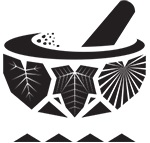
NEWS RELEASE
FOR IMMEDIATE RELEASE
NOVEMBER , 2022
MEDIA CONTACTS
Kim Ku'ulei Birnie
This email address is being protected from spambots. You need JavaScript enabled to view it.
808-383-1651
Brooks Baehr
This email address is being protected from spambots. You need JavaScript enabled to view it.
808-586-4417
New Report Documents Cultural Context and Recommendations for Pandemic Response in Native Hawaiian and Pacific Islander Communities
Hawai’i State Department of Health in collaboration with community and academic researchers releases “COVID-19 Vaccination Experiences and Perceptions among Communities of Hawaiʻi'” documenting COVID response in the context of Native Hawaiian and Pacific Islander communities.
HONOLULU – A new collaborative report, “COVID-19 Vaccination Experiences and Perceptions among Communities of Hawaiʻi,” authored by the Hawaiʻi State Department of Health and community and academic researchers examines the COVID-19 vaccine effort in Hawaiʻi from December 2020 through June 2021 in order to better understand successful strategies and identify lessons learned from this large scale public health intervention. This report offers valuable insight into creating equity and access for underserved and marginalized communities.
Scenes from community-based organizations’ collaborative outreach to extend COVID-19 testing and vaccine access in Native Hawaiian and Pacific Islander communities statewide. Photo Credit: COVID Pau; click here for hi-res files.
Key Recommendations from “COVID-19 Vaccination Experiences and Perceptions among Communities of Hawaiʻi” to improve public health emergency response among Native Hawaiian & Pacific Islander communities:
- Acknowledge the historical trauma and the lived experiences of marginalized communities to understand the adverse effects on one’s emotional and physical health.
- Foster collaborative partnerships with trusted community messengers and organizations to promote messages of well-being.
- Ensure transparency and diverse representation in decision-making processes at all levels and allocation of resources.
- Utilize multidimensional approaches that promote holistic healthcare by prioritizing in-language services, cultural values, and traditional practices.
- Document processes and protocols to create streamlined clinical responses that are replicable for future public health emergencies.
Following a series of interviews conducted in talanoa, or talk story style, the emerging themes highlighted the well-known impacts of colonization: degradation of natural resources, urbanization fueled by consumerism, introduction of foreign diseases, systemic changes in social and economic systems, and generational traumas that have led to health disparities and inequities.
The findings are a follow-up to DOH’s 2021 report entitled “Addressing Health Equity in Diverse Populations: COVID-19 in Hawaiʻi'' describing how long-standing structural inequalities were laid bare during the COVID-19 pandemic. The earlier report coincided with collaborative efforts to provide equitable access to the COVID-19 vaccine for every eligible individual in the state in the earliest months of vaccine availability.
Recognizing the diversity of peoples from islands across the Pacific offers many unique experiences, histories, and cultures. Shared intergenerational traumas manifest today through ongoing structural racism, inadequate and often inappropriate health care, and broken promises from federal and state governments that further undermine trust enjoyed by other communities. Because the vaccination effort described here was situated within the ancestral lands of the kanaka ʻōiwi, the authors have used the history of the Hawaiian Islands to contextualize this report as it is representative of Pacific peoples’ lived experiences. The summaries are organized into the four key themes of moʻolelo (story), pilina (relationship), maopopo (understanding), and hoʻolālā (plan).
The stories and experiences shared under these themes inform five key recommendations provided to guide equitable pandemic recovery efforts as well as future public health preparedness and prevention.
This report recognizes the uneven burden borne by Pacific Islander and Native Hawaiian communities and identifies the root causes of those disparities. Trusted relationships and relevant public health communication and engagement are necessary strategies in any campaign to reduce the inequities across health, social, economic and other indicators. This report offers valuable insight into improving access and striving for equity for underserved and marginalized communities throughout a public health emergency.
For more information or to read the full report, click here.
MEDIA ASSETS: click here to access:
- Full report as a PDF file
- Video interview clips with Dr. Sarah Kemble, report authors Chantelle Matagi and Keʻalohilani Worthington
- Video b-roll of community testing and vaccine outreach
- Photos from community testing and vaccine outreach
- News release as a PDF
About the Native Hawaiian & Pacific Islander Hawaii COVID-19 Response, Recovery & Resilience Team (NHPI 3R)
The Native Hawaiian & Pacific Islander Hawaii COVID-19 Response, Recovery & Resilience Team (NHPI 3R) was established in May 2020, in alignment with the national NHPI Response Team, to improve the collection and reporting of accurate data, identify and lend support to initiatives across the Hawaiian Islands working to address COVID-19 among Native Hawaiian & Pacific Islanders, and unify to establish a presence in the decision-making processes and policies that impact our communities. More than 60 agencies, organizations and departments comprise the NHPI 3R.Team. Papa Ola Lōkahi serves as the NHPI 3R backbone organization.
###







